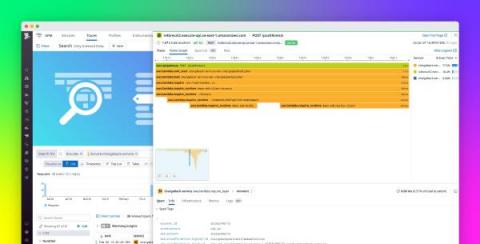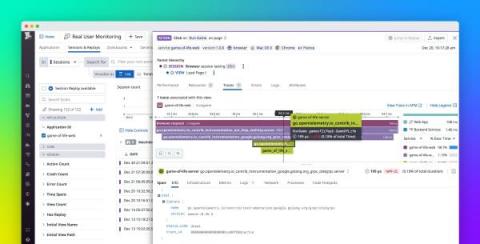Operations | Monitoring | ITSM | DevOps | Cloud
Latest Posts
Understand serverless function performance with Cold Start Tracing
Serverless developers are undoubtedly familiar with the challenge of cold starts, which describe spikes in latency caused by new function containers being initialized in response to increasing traffic. Though cold starts are usually rare in production deployments, it’s still important to understand their causes and how to mitigate their impact on your workload.
Ship high-quality, secure code faster with Datadog Code Analysis
Monitor your Argo CD clusters with Datadog
Argo CD is a declarative continuous delivery tool for Kubernetes developed by the Cloud Native Computing Foundation (CNCF). Argo CD automates your application deployment by continuously monitoring the live state of your containers and comparing it against the desired state in your Kubernetes manifest files, then pulling changes into your Kubernetes clusters as needed.
Monitor code quality in Datadog with SonarQube
SonarQube is a tool for static code analysis that integrates with your existing CI pipelines to run quality checks on your codebase as it changes. As you develop and release new code, constant monitoring of code quality is crucial to ensure compliance, stability, and security. SonarQube’s Clean-As-You-Code philosophy helps to avoid technical debt by running regular code checks and alerting you to any problems early on.
Correlate Datadog RUM events with traces from OTel-instrumented applications
OpenTelemetry (OTel) is an open source, vendor-neutral observability framework that supplies APIs, SDKs, and tools for the instrumentation of cloud-native applications and services. OTel enables you to collect metrics, logs, and traces from a variety of sources and route them to various backends. By itself, however, it can’t help you analyze this data or correlate telemetry from different parts of your stack.
Datadog's commitment to OpenTelemetry and the open source community
The OpenTelemetry (OTel) project is an open source initiative with the goal of providing vendor-neutral standards and tools that enable users to collect telemetry from any source in their environment and send it to any backend. A core tenet of Datadog is to provide a single, unified platform for customers to easily collect and monitor all of their observability data, regardless of where it comes from.
Use library injection to auto-instrument and trace your Kubernetes applications with Datadog APM
Many organizations rely on distributed tracing in Datadog APM to gain end-to-end visibility into the performance of their Kubernetes applications. But as teams grow, it can become impractical for them to manually configure each new application with the libraries and environment variables needed for tracing.
Monitor Boundary on the HashiCorp Cloud Platform with Datadog
HashiCorp Boundary provides a secure way to manage remote access to applications and infrastructure without exposing the underlying network or credentials. Launched two years ago as an open source solution, HashiCorp recently announced a fully managed version on the HashiCorp Cloud Platform (HCP), enabling you to manage identity-based authorizations, user and target onboarding, and more for dynamic environments.
Monitor Tanzu Kubernetes Grid on vSphere with Datadog
With vSphere and Tanzu Kubernetes Grid (TKG), VMware enables enterprise organizations to combine the economic advantages of virtual machines (VMs) with the agility, portability, and scalability provided by Kubernetes. vSphere is VMware’s platform for the provisioning and management of VMs.











